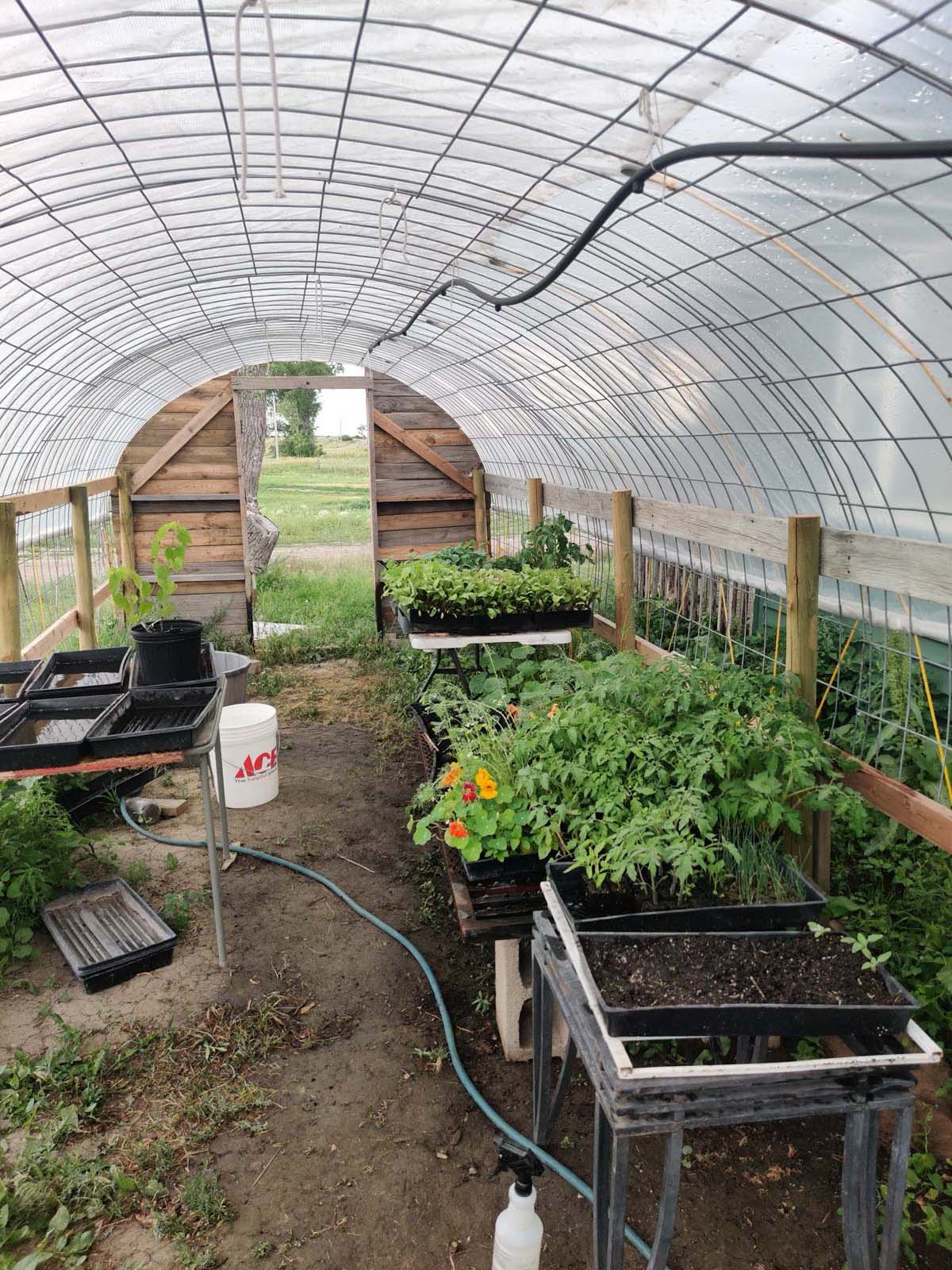Food Sovereignty
History
At Magpie, we know that family food sovereignty is an essential part of caring for our children, elders, and the land. A food sovereign family is one that leverages its skills, wisdom, and resources to produce its own healthy, culturally appropriate, and ecologically sustainable food for its own consumption. For hundreds of generations, Oglala Lakota ancestors lived in close relation with the prairie. They hunted buffalo and lived off of their dried meat and fat all winter. They made sure to utilize every part of the buffalo, turning hides into robes and warm tipi covers, sinew into bowstrings and twine, bones into tools, and many other culturally significant crafts. They also hunted smaller game and foraged for fruit, berries, edible and medicinal plants. The wise game management and hunting pressure from both the Lakota and wolves kept the buffalo moving which allowed the soil to build and beautiful prairie ecosystems to flourish for thousands of years.
After an extended government and private sector campaign to exterminate the buffalo in order to subdue the Plains Tribes, they/our Oglala ancestors were forced to depend on the US government and national economy to feed themselves. There was a time on Pine Ridge when most families were largely meeting their own needs by raising cattle and homesteading. Government policy and economic shifts largely ended that system by the 1970s. Today, we are again mostly dependent on government food programs and supermarkets to meet our needs. The reservation is a food desert. Many of us have to travel 30+ miles to the nearest grocery stores, where food prices are consistently some of the highest in the contiguous US. An epidemic of chronic disease is taking the health and lives of our relatives at a rate 8 times the US average.

Today
Ten years ago, led by Leah Mutz, the family began gardening Down East again. While we cannot right now return to the ancestral ways of hunting buffalo on the open Plains, we are developing food sovereign infrastructure through a synthesis of traditional and contemporary management practices. We grow a variety of vegetables, potatoes, perennial food plants, and herbs for family use. Currently we maintain three gardens Down East. One irrigated mixed vegetable garden, one dry-farmed vegetable, perennial, and herb garden, and one keyline garden we are transitioning to perennial food production. There are many challenges with gardening off grid in an arid climate with leasers’ cows roaming freely. Our focus is on increasing food production while also increasing consistent engagement with our children in the gardens so they can relate with and utilize the land the way Grandpa wanted and our ancestors did.
The Nursery Greenhouse
Mixed Vegetables 2023
Potatoes on Keylines 2024
—————————————————————————————————————————
More Food Sovereignty History (for later)
At Magpie, we know that family food sovereignty is an essential part of caring for our children and the land. A food sovereign family is one that leverages its skills, wisdom, and resources to produce its own healthy, culturally appropriate, and ecologically sustainable food for its own consumption. For hundreds of generations, our Oglala Lakota ancestors lived in close relation with the prairie. They hunted buffalo and lived off of their dried meat and fat all winter. They made sure to utilize every part of the buffalo, turning hides into robes and warm tipi covers, sinew into bowstrings and twine, bones into tools, and many other culturally significant crafts. They also hunted smaller game and foraged for fruit, berries, edible and medicinal plants. The wise game management and hunting pressure from both the Lakota and wolves kept the buffalo moving which allowed the soil to build and beautiful prairie ecosystems to flourish for thousands of years. Even for centuries after 1492, the food sovereign ways of the Oglala provided autonomy and prosperity to the people.
The food sovereign system was so effective that the US government considered it a threat to their effort to subdue Indigenous populations in the plains and steal their land. By 1867, the US government and its private sector partners explicitly aimed to exterminate the buffalo in order to starve out the tribes. US Army commanders were ordering their troops to exterminate as many buffalo as possible. As the Second Industrial Revolution took off, industrial capitalists began buying buffalo hides to make leather drive belts for their factories. This accelerated the extermination immensely. Robbed of their food sovereignty and after a long war against the government, most of the Oglala eventually were forced onto the reservation